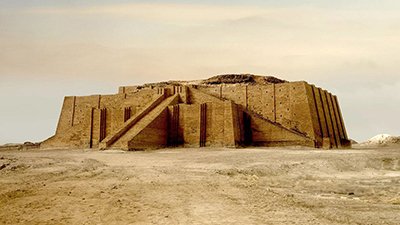
Spirits, Ghosts, and Angels
Dissecting the differences between spirits, angels, and ghosts as well as the capacity of each in the original language in the Bible
We occasionally receive questions about whether Luke 24:37–43 introduces a Bible contradiction. In this passage, Jesus said that a spirit (or as some versions state, “a ghost”) does not have flesh and blood, and then he proved that he had flesh and blood by asking them to look at and touch him. To further demonstrate his physical presence, he ate broiled fish. But is there really an apparent contradiction, or are we just looking at a misunderstanding caused by modern conceptions of the terms? Before we discuss the alleged contradiction, let’s look at the two key verses (verses 37 and 39) in different English translations.
But they were startled and frightened and thought they saw a spirit. (Luke 24:37)
See my hands and my feet, that it is I myself. Touch me, and see. For a spirit does not have flesh and bones as you see that I have. (Luke 24:39)
They were startled and frightened, thinking they saw a ghost. (Luke 24:37 NIV)
Look at my hands and my feet. It is I myself! Touch me and see; a ghost does not have flesh and bones, as you see I have. (Luke 24:39 NIV)
Spirits, Souls, and Angels: Defining the Terms
The Greek word used in verse 37 and 39 is πνεῦμα (pneuma), which refers to many things in the New Testament (NT). In these verses, it is translated variously as spirit or ghost. Elsewhere, it is translated as soul, spirit, (ghost in older English translations), the “spirit” of a man (meaning how he thinks and feels), the Holy Spirit, a demon (unclean spirit), the divine nature of Christ, human breath, and the wind. While it occasionally refers to angelic beings, it is never translated as angel.
All 186 instances of angel(s) in the NT are from the Greek word ἄγγελος (aggelos pronounced ang’-el-os). This is likely the cause for the alleged contradiction. In Hebrews 1:7 and 1:14, angels are described as spirits (s) and ministering spirits, respectively. So although the Greek words are different and usually refer to different things, there is some overlap between them. That is, angels are spirits (pneumata), but pneuma usually refers to something other than an angel.
Some may also think of Acts 12:15 where the disciples fear that Peter had been killed while in prison when he (quite unexpectedly) showed up at the door. After Rhoda answered the door and told the disciples that Peter was outside the gate, they told her that “it is his angel” (aggelos). This could reflect a belief that when the soul of a true follower of God finally left its body, the soul became like an angel but was unable to take physical form. Or it could be that they believed it was Peter’s guardian angel (a concept possibly alluded to by Jesus in Matthew 18:10).
And this is where the alleged contradiction comes in. By taking the Greek words for spirit and angel as exactly equal in all usages, when in fact they are not, some people believe that Jesus made a mistake in Luke 24. Either his words were wrong because they ignore passages about angels being able to take on physical form and eat (Genesis 19:3), or they are contradictory if he claimed that ghosts (in the modern sense of a disembodied, deceased human) actually exist when he said that he wasn’t a ghost. But this is simply a case of misconstruing the intricacies of the Greek words. An angel may be termed a spirit, but it is not to be confused with all senses of the word spirit (pneuma) as used in NT Scripture. It would be akin to someone saying that a fish scale, a musical scale, and a weight scale all must mean the same thing because they are the same English word.
So there is no contradiction here. In fact, Jesus is calming the disciples, and he may have been correcting a bit of Jewish folklore.
So there is no contradiction here. In fact, Jesus is calming the disciples, and he may have been correcting a bit of Jewish folklore. Pneuma can also mean “a human soul that has left the body” (in other words, a disembodied spirit or what modern people think of as a ghost). Some Jews of that time apparently believed that a person’s soul stayed near his body for three days just in case it came back to life.1 After three days, the soul moved on, so it was thought unlikely for someone to come back to life after that.2 Instead, the soul either went to Sheol if it was wicked or was transformed into an angel3 and went to Abraham’s Bosom if it was believing (see Luke 16:22–23). Apparently, the Jewish concept of a disembodied soul or spirit is not the same as the Western concept of a ghost, which is considered to be a person’s spirit trapped on earth indefinitely after death. The “spirit” in some Jewish traditions was the soul of a man or woman that waited three days around its body in case it would come back to life (possibly from what we would call a coma) or be resurrected, as in the case of the miracles performed by Elijah and Elisha through the power of God.4 In our modern world, the finality of death can be ascertained with more certainty than it used to be. We have instruments that determine if a person has “flatlined.” We can measure pulse, heartbeat, respiratory functions, and brainwaves. Even as late as 100 years ago, the ability to officially pronounce someone as deceased (or to state the exact time of death) was much harder to determine.
Jesus Disproves Conventional Beliefs
Before Jesus raised Lazarus in John 11:43–44, it is recorded that he deliberately waited two days after he heard Lazarus was gravely ill (John 11:6). Based on the timeline given, it appears Lazarus died later that same day. By the time Jesus and his disciples arrived in Bethany, Lazarus had been dead for four days. Even Lazarus’s sister Martha was aghast at the idea of Jesus asking the stone of Lazarus’s grave to be rolled away, as Lazarus would by now be putrefying (John 11:39). He was beyond physical resurrection in conventional thought of the time.5 Even family members and friends thought Jesus had “missed his opportunity” to perform a miracle by healing Lazarus before he died (John 11:32, 37). But the sovereign Son of God is not constrained by human misbeliefs and has power over even death itself. Lazarus was raised, and God was glorified.
After his crucifixion and resurrection, Jesus startled his disciples when he suddenly appeared in the midst of the disciples who had closed (locked) the doors for fear of the Jews (Luke 24:35, c.f. John 20:19). They were alarmed since the doors were shut, and his sudden appearance led them to suppose that they had seen a spirit. Even a man who had been raised from the dead, like Lazarus, for example, could not walk through walls or closed doors—if that is what Jesus did. He may have simply manifested in their midst, an act which is also beyond the ability of a mere mortal.
This was not the first time the disciples had been “spooked” by seeing Jesus.
This was not the first time the disciples had been “spooked” by seeing Jesus. Recall that the disciples were afraid and thought that they had seen a ghost (Mark 6:49) when Jesus walked on the water toward them. The Greek word used there is “phantasma” from which we get our English word phantasm. It may be possible that Peter’s request to come out to Jesus on the water was not just for himself, but was meant to calm the rest of the disciples. After Jesus spoke to them from the water, Peter asked, "Lord, if it is you, command me to come to you on the water" (Matthew 14:27–28). Notice the context: the disciples were at that very moment afraid that they were seeing a disembodied spirit, and if that were the case, Peter would have splashed down into the sea the second he jumped overboard. The fact that he didn’t sink would have reassured the disciples that the Son of God had given Peter the power (temporarily) to walk on water. So it’s possible that Peter’s brashness was motivated in some part by a desire to comfort his frightened friends.
In Luke 24, Jesus comforted his disciples, dispelled the notion that he was a spirit, and proved that he had both body and soul. Eating something was the final proof to demonstrate that he was not a disembodied human spirit. Jesus’s statement was not “even though there are ghosts, I’m not a ghost.” It was an emphatic, “I am not a disembodied soul; I have both soul and body.” Jesus proved that he was not just a spirit, and neither was he just a man in a mortal human body. He was in his resurrected glorified body. The apostle Paul expounded on this subject of a resurrected spiritual body in 1 Corinthians 15:42–52, showing that Jesus was the firstfruits (1 Corinthians 15:20) of what all Christians will someday experience.
Perhaps It Is Time to Give Up the “Ghost”
One final note: ghost may no longer be a good translation of the word pneuma, especially in light of the modern meaning of ghost; spirit would be a more accurate translation. To emphasize that point, consider the following verses and ask yourself which, if either, of these make good sense: “Ghost of God” or “God is ghost.”
And when Jesus was baptized, immediately he went up from the water, and behold, the heavens were opened to him, and he saw the Spirit of God descending like a dove and coming to rest on him (Matthew 3:16).
God is spirit, and those who worship him must worship in spirit and truth (John 4:24).
If you search for “Holy Spirit” in the older English translations (Geneva and KJV) you find that there are very few references (four in the KJV [Luke 11:13; Ephesians 1:13; Ephesians 4:30; 1 Thessalonians 4:8] and only three in the Geneva as Luke 11:13 uses “Holy Ghost” there). In the 1500s and 1600s, the terms were mostly interchangeable, and the modern concept of ghosts had not been fully developed, But in a few instances, as in the two verses quoted above, as well as several others, the translators deliberately chose not to use “ghost” but “spirit.” Almost all usages of “ghost” in these versions are either “Holy Ghost” or “gave up the ghost,” referring to Christ yielding his spirit at his crucifixion. In all other instances, the translators chose the word “spirit” instead of “ghost.” Perhaps the best example to highlight this is John 7:39, where the Holy Spirit is called spirit and ghost in the same sentence, even though pneuma is used in both cases.
But this spake he of the Spirit (pneumatos), which they that believe on him should receive: for the Holy Ghost (hagion pneuma) was not yet given; because that Jesus was not yet glorified (John 7:39 KJV).
Conclusion
The Greek word πνεῦμα (pneuma) has many different meanings, but the most common usage is of soul or spirit, a man’s inner spirit (emotions, desires, will, etc.) or in reference to the Holy Spirit.6 Although an angel can be rightly called a spirit, it is highly unlikely that the disciples thought Jesus was an angel in Luke 24:37, or Luke probably would have used the word ἄγγελος (aggelos). There is no contradiction with Jesus saying he was not a spirit to his disciples. He was not an apparition, whether ghost, phantasm, shade, or any other paranormal entity. Notice also the precision of Jesus’s words: he did not say that he wasn’t an angel, for angels have appeared in the flesh (Genesis 18 and 19). And he was not merely a mortal man brought back to life; he was the God-man in his resurrection body—the same Jesus who will return one day and give each of his own resurrection bodies! And we all look forward to that glorious appearing!
But in fact Christ has been raised from the dead, the firstfruits of those who have fallen asleep. For as by a man came death, by a man has come also the resurrection of the dead. For as in Adam all die, so also in Christ shall all be made alive. But each in his own order: Christ the firstfruits, then at his coming those who belong to Christ. (1 Corinthians 15:20–23)
Footnotes
- “For 3 days (after death), the soul flies over the body thinking that she will return to it; when she sees that its facial features have changed, she leaves it and goes on her way” (y. Mo’ed Qat. 3.5.82b) also see: y. Mo’ed Qat. 8.5; b. Yebam. 16.3; b. Sanh. 90b–91a; b. Shabb. 151b; Gen. Rab. 100; Sem. 8.1.
- Babylonian Talmud, Translated by Michael L. Rodkinson. Volumes 1-10, (1918): Tract Ebel Rabbathi (Great Mourning), or Sema'hoth (Joys). Chapter VIII, a. https://www.jewishvirtuallibrary.org/jsource/Judaism/FullTalmud.pdf.
- See the pseudepigraphal book 2 Baruch 51:3–6. This may also be alluded to in 2 Esdras 7:97.
- Although in 2 Esdras 7:91–101 the spirit of a righteous man is said to take its rest on the 4th day but take another 3 days to contemplate his glorious state and reach his “habitation” (likely referring to Abraham’s bosom) on the 7th day after death.
- Babylonian Talmud, Tract Ebel Rabbathi (Great Mourning), or Sema'hoth (Joys). Chapter VIII, a.
- As a ministry, AiG does not take an official position on whether man is dichotomous (body and soul/spirit, where soul and spirit are merely interchangeable words of the same substance) or trichotomous (body, soul, and spirit, where each are truly separate and unique). This is a disputed issue among theologians, and there doesn’t seem to be a clear answer to it. It is also possible to envision a hybridized view as well, as we have stated in another article on this topic: “The spirit would be a modified aspect of the soul, like a flip side of the same coin. There is one coin but two unique sides to it. In other words, our soul is specially fashioned with a spiritual aspect, like duality. So soul and spirit could almost be used interchangeably (being two parts to the same “coin”), which we find in Scripture (Luke 1:36–47). Yet soul and spirit could be seen as unique (two sides of the “coin”), which we also find in Scripture (1 Thessalonians 5:23; Hebrews 4:12).”

Answers in Genesis is an apologetics ministry, dedicated to helping Christians defend their faith and proclaim the good news of Jesus Christ.
- Customer Service 800.778.3390
- Available Monday–Friday | 9 AM–5 PM ET
- © 2025 Answers in Genesis



